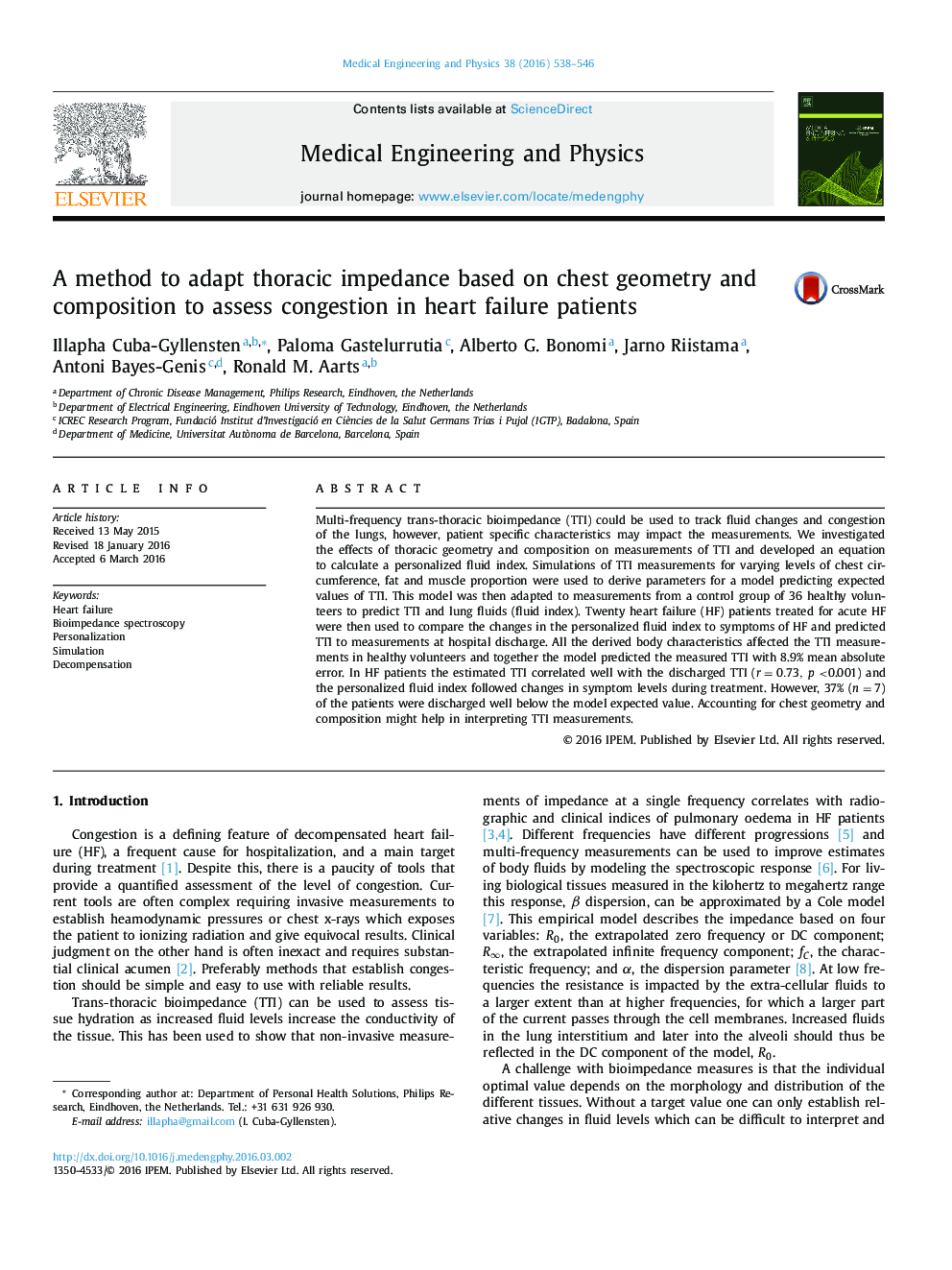| کد مقاله | کد نشریه | سال انتشار | مقاله انگلیسی | نسخه تمام متن |
|---|---|---|---|---|
| 875661 | 910791 | 2016 | 9 صفحه PDF | دانلود رایگان |
• We examined simulations and measurements of thoracic impedance for different chests.
• Chest geometry and composition has a non-linear impact on measured thoracic impedance.
• We describe a method to adjust for this to provide expected dry impedance and fluid index.
• Fluid indices were high in heart failure patients admitted for acute heart failure.
• In particular symptoms associated with pulmonary congestion increased the index.
Multi-frequency trans-thoracic bioimpedance (TTI) could be used to track fluid changes and congestion of the lungs, however, patient specific characteristics may impact the measurements. We investigated the effects of thoracic geometry and composition on measurements of TTI and developed an equation to calculate a personalized fluid index. Simulations of TTI measurements for varying levels of chest circumference, fat and muscle proportion were used to derive parameters for a model predicting expected values of TTI. This model was then adapted to measurements from a control group of 36 healthy volunteers to predict TTI and lung fluids (fluid index). Twenty heart failure (HF) patients treated for acute HF were then used to compare the changes in the personalized fluid index to symptoms of HF and predicted TTI to measurements at hospital discharge. All the derived body characteristics affected the TTI measurements in healthy volunteers and together the model predicted the measured TTI with 8.9% mean absolute error. In HF patients the estimated TTI correlated well with the discharged TTI (r=0.73,r=0.73,p <0.001) and the personalized fluid index followed changes in symptom levels during treatment. However, 37% (n=7n=7) of the patients were discharged well below the model expected value. Accounting for chest geometry and composition might help in interpreting TTI measurements.
Journal: Medical Engineering & Physics - Volume 38, Issue 6, June 2016, Pages 538–546
